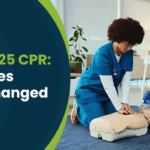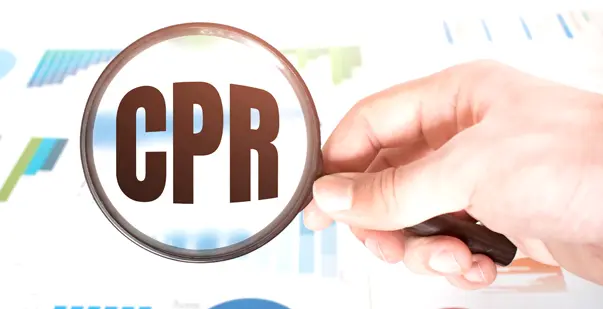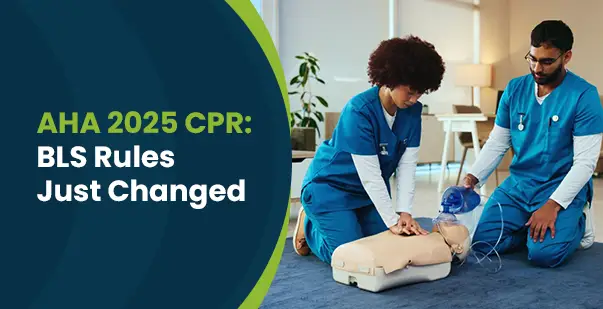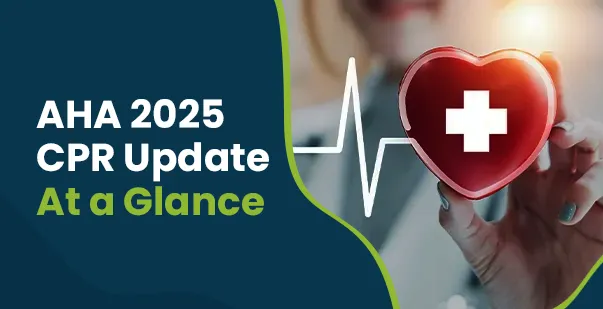The history of Cardiopulmonary Resuscitation (CPR) traces back to centuries. The gradual progression of this life saving skill, is proof that human beings have always desired to stay prepared in emergencies. To properly answer- “When was CPR invented”, it is important we go back to the origin of this groundbreaking medical innovation.
Back in the 16th century, artificial respiration was introduced based on Vesalius’s project of living animals. The formalization of CPR happened not earlier than the mid 20th century. As we explore more into the history of cardiopulmonary resuscitation, we will learn about the moments contributing to this breakthrough. So let’s begin this journey through time to understand when, why and how CPR became an indispensable tool in emergency medicine.
CPR Through History
Cardiopulmonary resuscitation is a vital emergency procedure that has saved millions of lives. The history of CPR is marked by significant milestones. These remarkable contributions are made by several pioneers. Let’s trace the history of CPR with the help of a timeline.
- 500 BC: Ancient Egyptians describe techniques resembling resuscitation in medical texts.
- Middle Ages: Various methods such as bellows to inflate lungs and physical manipulation are documented in Europe.
- 1732: The Paris Academy of Sciences recommends mouth-to-mouth resuscitation for drowning victims.
- 1740: The Paris Academy officially endorses mouth-to-mouth resuscitation, leading to widespread adoption in cases of drowning.
- 1856: The Marshall Hall method, involving turning a patient on their side and applying rhythmic pressure, is introduced.
- 1891: Dr. Friedrich Maass performs the first documented chest compression in humans.
- 1956: Dr. James Elam and Dr. Peter Safar develop mouth-to-mouth resuscitation and demonstrate its effectiveness.
- 1960: Dr. Peter Safar, Dr. James Elam, and Dr. William Kouwenhoven creates the foundation for modern CPR.
- 1972: CPR training becomes widespread with the establishment of mass training programs and the introduction of CPR manikins for practice.
- 2010: Hands-Only CPR is recommended for untrained bystanders, focusing solely on chest compressions.
- 2020: Continuous advancements in CPR techniques and guidelines based on ongoing research and technological innovations.
The Importance Of CPR In Emergency Medicine
In the history of emergency medicine, the advent of CPR has quite literally been a blessing. It can make all the difference between life and death. The entire technique is designed magnificently to keep blood and oxygen flow intact after the victim has suffered a stroke or arrest. The process, if efficiently administered, can save lives. If you are a bystander skilled in CPR, you can intervene to stabilize the patient till medical help arrives.
Here are the key reasons as to why CPR is indispensable in emergency medicine:
- Immediate Life-Saving Intervention: CPR helps maintain blood circulation and oxygenation during cardiac arrest, keeping vital organs functional until advanced care is available.
- Increased Survival Rates: Prompt administration of CPR can double or triple a cardiac arrest victim’s chances of survival, especially if performed within the first few minutes.
- Preservation of Brain Function: By maintaining blood flow to the brain, CPR helps prevent brain damage. Thus can occur within minutes of oxygen deprivation.
- Community Empowerment: Widespread CPR training enables bystanders to act swiftly in emergencies, bridging the gap between the onset of cardiac arrest and the arrival of emergency responders.
- Foundation for Advanced Medical Care: CPR serves as a critical initial step that supports advanced life-saving techniques such as defibrillation and advanced cardiac life support (ACLS).
- Adaptability to Various Emergencies: CPR techniques are also applicable in situations like drowning, choking, and drug overdose. This is why it is a versatile skill in emergency medicine.
Read More: A Complete Guide to Cracked Ribs Diagnosis and Treatment
How Does CPR Support Advanced Medical Care?
CPR or Cardiopulmonary resuscitation is a fundamental component of emergency response. It serves as the first line of defense in several life-threatening situations. Even though CPR itself is a lifesaving technique, it also supports numerous advanced medical approaches. This bridges the gap between the onset of emergency and beginning of specialized treatment.
These are the ways in which CPR supports Advanced Medical Care-
- Stabilization of the patient’s condition: CPR stabilizes a patient’s condition by maintaining blood flow and oxygenation. This is essential for sustaining life until medical help arrives and advanced care can be administered.
- Defibrillation: Continuous chest compressions increase the likelihood of successful defibrillation. Defibrillation is a critical intervention that restores normal heart rhythm in cases of arrhythmia.
- Enhancing the efficacy of medicines: Effective CPR enhances the working of emergency medicines by maintaining circulation. This allows drugs to reach their target organs more efficiently.
- Supporting Advanced Airway Management: CPR keeps a patient stable during advanced airway management. While endotracheal intubation or other advanced airway implementations, cpr ensures adequate oxygenation and ventilation.
- Critical time buying measure: CPR buys critical time for emergency medical services (EMS) to arrive. By providing continuous life support, cpr provides time to the patient for availing advanced treatments like cardiac catheterization or surgery.
Frequently Asked Questions : FAQs on CPR
1. What is CPR?
CPR (Cardiopulmonary Resuscitation) is an emergency life-saving procedure that combines chest compressions and rescue breaths. This technique is applied to maintain circulatory flow and oxygenation in a person who has suffered cardiac arrest.
2. When should CPR be performed?
CPR should be performed when a person is unresponsive and not breathing or not breathing normally (gasping). It is crucial to act quickly, as immediate CPR can significantly increase the chances of survival.
3. How do I perform CPR?
- Check Responsiveness: Tap the person and shout, “Are you okay?”
- Call for Help: If there is no response, call emergency services.
- Begin Chest Compressions: Place your hands in the center of the chest and press down hard and fast at a rate of 100-120 compressions per minute.
- Provide Rescue Breaths: If trained, give 2 breaths after every 30 compressions, ensuring the chest rises with each breath.
4. Can I perform CPR if I’m not trained?
Yes, even untrained bystanders can perform Hands-Only CPR, which involves only chest compressions. This can still be effective and is encouraged if you are not confident in providing rescue breaths. But it is always advised to sign up for CPR classes. Online classes are cost effective and help you master the skills from the comfort of your home.
5. What is Hands-Only CPR?
Hands-Only CPR involves continuous chest compressions without rescue breaths. It is recommended for untrained rescuers or situations where rescue breaths might not be feasible. It focuses on maintaining blood flow until professional help arrives.
6. How deep should chest compressions be?
For adults, chest compressions should be at least 2 inches (5 cm) deep but not more than 2.4 inches (6 cm). For children and infants, the depth varies based on their size but is generally about one-third the depth of the chest.
7. How fast should chest compressions be?
Chest compressions should be performed at a rate of 100-120 compressions per minute.
8. What if I’m tired and can’t continue CPR?
If you become tired, try to find someone else to take over chest compressions. It’s important to continue CPR until professional help arrives or the person shows signs of recovery.
9. What are the potential risks of performing CPR?
While there is a risk of rib fractures or other injuries due to the force of chest compressions, the benefits of performing CPR far outweigh the risks, as CPR can save a person’s life.
10. Why is early CPR important?
Early CPR is crucial because it maintains blood flow to the brain and heart, increasing the likelihood of survival and reducing the risk of permanent damage. Immediate intervention is a critical component in the chain of survival for cardiac arrest victims.
Read More: Pulse But No Breathing: How CPR Helps?
Recent Advances and Future Directions in CPR
One significant advancement is the emphasis on high quality CPR. High quality CPR prioritizes the dynamics like compression depth, frequency and interruptions. The world of emergency medicine has benefited a lot with the advent of technology. Devices like AEDs and feedback machines have enhanced the accuracy and efficacy of CPR delivered. These innovations have helped both trained and untrained people from various walks of life.
With time, research and more advancement, the medical world has given us the alternative approach to CPR as well. Mechanical CPR devices provide consistent compressions and reduce rescuer fatigue during prolonged resuscitation.
Future directions for CPR aim to personalize resuscitation strategies based on unique patient needs and response patterns. This will be made possible with advanced monitoring techniques, predictive analytics, and targeted interventions.
Conclusion
Now that you have an in-depth knowledge on the topic – “ When was CPR invented”, it can be established that this life saving intervention is the result of relentless pursuit. From the ancient civilizations to the protocols in place today, the evolution of CPR has been marked by several milestones. It has also revolutionized the entire field of cardiac arrest management. This invention has successfully and dramatically improved survival rates. It has also empowered several communities to respond effectively in emergencies. The invention of CPR reminds us of the profound impact that a simple yet powerful intervention can have on saving lives.









